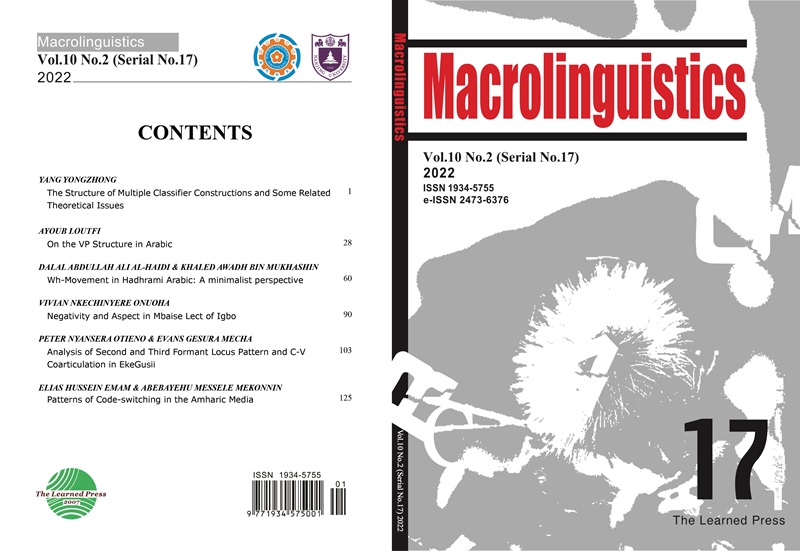阿姆哈拉语和埃扎语中的否定:比较视角
引用次数: 0
摘要
本文描述了阿姆哈拉语和埃扎语这两种埃塞俄比亚-闪米特语中的否定标记。从共时比较的角度进行了描述。本文揭示了阿姆哈拉语和埃扎语都使用否定前缀来反转肯定表达的真实条件。两种语言所使用的否定语素都有两个异体变体,它们的交替受语法限制。阿姆哈拉语中否定标记的两种异形形式分别是:前者出现在完成动词和祈使动词中,后者出现在不完成动词和祈使动词的变位中。类似地,“叠扎”否定前缀与完成动词的词根一起出现,与不完成动词、祈使句和祈使句形式一起出现。在这两种语言中,否定前缀都是附在否定从句中人称前缀前面的动词和从属词后面的动词。当涉及到共同动词和存在动词时,与原型动词相比,两种语言中的否定可以通过两种方式表达:在某些情况下,使用上述否定前缀;在其他一些情况下,引入了完全不同的动词形式来表达否定的阅读,因此,通过补充来进行词汇否定。本文章由计算机程序翻译,如有差异,请以英文原文为准。
Negation in Amharic and Ezha: A comparative perspective
This article offers a description of negation marking in the two Ethio-Semitic languages: Amharic and Ezha. The description has been made from the perspective of synchronic comparison. The article discloses that both Amharic and Ezha make use of negative prefixes in order to reverse the truth condition of an affirmative expression. The negative morphemes employed by each of the two languages have two allomorphic variants whose alternation is grammatically conditioned. The two allomorphs of the negative marker in Amharic are alwhich occurs with perfective and imperative verbs, and athat surfaces with imperfective and jussive verbal conjugations. Similarly, the Ezha negative prefix appears as anwith perfective verbal bases, and as awith imperfective, jussive and imperative verb forms. In both languages, the negative prefixes attach to verbs preceding person prefixes and following subordinators in negative subordinate clauses. When it comes to copular and existential verbs, as compared to prototypical verbs, negation in both languages can be expressed in two ways: in some cases, the aforementioned negative prefixes are employed; and in some other cases, completely different verb forms rendering negative readings are introduced, hence, lexical negation via suppletion.
求助全文
通过发布文献求助,成功后即可免费获取论文全文。
去求助
来源期刊
自引率
0.00%
发文量
83
审稿时长
20 weeks
期刊介绍:
Macrolinguistics (ISSN 1934-5755, e-ISSN 2473-6376) is an international academic journal which is specialized in research papers of non-Indo-European linguistics. It is published biannually by The Learned Press and funded by the Double First-Class Initiative of Nanjing University. It aims at contributing to the complementarity and interaction of linguistic research worldwide.

 求助内容:
求助内容: 应助结果提醒方式:
应助结果提醒方式:


